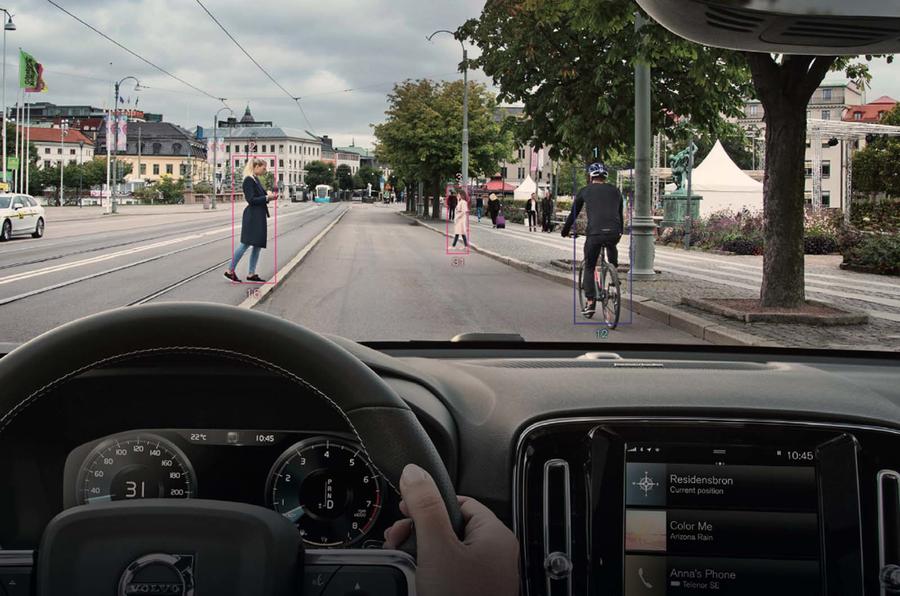The latest automatic emergency braking (AEB) and forward collision warning systems fitted to some new cars may not be as effective in the real world as their performance in laboratory tests suggests, according to a leading industry expert.
The European Commission recently set out proposals to update the minimum safety standards for all new vehicles sold on the EU market. Among these suggestions, which are expected to come into force from 2021, is that AEB should be mandatory.
Steve Boyle, boss of automotive testing consultancy Moshon Data, believes that while some manufacturers are embracing the technology, others are just “ticking boxes” in order to pass Euro NCAP crash tests.
Land Rover announces off-road autonomous tech
“Volvo takes it really seriously, while some other manufacturers just want a five-star-rated car with minimum effort,” said Boyle. “Subaru’s stereo camera system is very good – it stops for whatever you put in front of it – but I’ve seen systems struggling to perform in the rain. I’ve done some demonstrations where some cars didn’t stop at all, but others that we tested did.”
Although many vehicles’ AEB systems are able to pass Euro NCAP’s tests, Boyle has seen evidence that the technology performs less well in real-world conditions or when faced with vehicles or objects other than standardised test targets.
Last December, the Dutch government carried out tests to investigate why it hadn’t seen an expected reduction in crashes at roadworks following the introduction of mandatory AEB on trucks and buses in 2015.
“We had six trucks from different manufacturers and 12 objects to drive the trucks at,” said Boyle. “The targets included lorry trailers with and without containers on the back, a milk tanker, a motorbike, a police car parked sideways and a forward-facing car.
BMW previews autonomous iNext ahead of concept reveal later this year
“We also took a soft target used for Euro NCAP crash tests and a simple rubber post with a corner reflector [a small, angled reflector designed to be seen by radar]. Overall, 88% of the trucks saw the soft target but a lot of them didn’t see the lorry trailers, breakdown trucks and low-loaders. More trucks saw the corner reflector mounted on a post than saw the milk tanker.
“AEB is a positive thing. At the moment, the technology is good but it can be made better and everybody should have a better understanding of it. Euro NCAP is voluntary and it has very specific tests. Laboratory tests are fine, but what happens in the real world?”





Add your comment